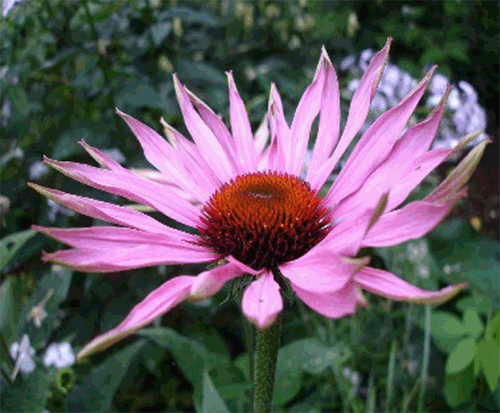Echinacea
Patrick WalshCorrespondence to: RCSI Bahrain Busaiteen, Kingdom of Bahrain, Bahrain. pwalsh@rcsi.com
Journal of Primary Health Care 10(3) 280-281 https://doi.org/10.1071/HC15937
Published: 4 October 2018
Journal Compilation © Royal New Zealand College of General Practitioners 2018.
This is an open access article licensed under a Creative Commons Attribution-NonCommercial-NoDerivatives 4.0 International License.
Echinacea belongs to the daisy family of herbaceous flowering plants. While the genus Echinacea has ten known species, one of the three best studied and most used species within the genus has been Echinacea purpurea. It is indigenous to the Atlantic drainage area of North America and Canada, but not Mexico. A German doctor, Dr Meyer, learned about it from the Pawnee tribe who had used it for the treatment of infections, skin wounds, and snake bites. He introduced it into Europe, and by 1907 it had become one of the most popular herbs in medical practice. Today, Echinacea purpurea can be found in many licenced herbal medicinal products throughout the western world.
COMMON NAMES:
Eastern purple coneflower, purple coneflower, American coneflower, black susans, black sampson, comb flower, hedgehog, Indian head, Kansas snakeroot, narrow-leaved purple coneflower.
BOTANICAL NAME:
Echinacea purpurea.
LATIN NAME:
Echinaceae purpureae herba.
PREPARATIONS:
Expressed juice, dried juice, tincture.
ACTIVE CONSTITUENTS:
Three major groups of secondary metabolites have been linked with the plant’s pharmacological activities; these include alkamides, caffeic acid derivatives, and polysaccharides.
POSOLOGY & METHOD OF ADMINISTRATION:
Purple coneflower (Fig. 1) should be administered orally according to licenced manufacturers’ recommendations. It can be given to adults and adolescents aged ≥ 12 years. It should not be used for more than 10 days.

|
Herbalists often use Echinacea purpurea in combination with other herbs, depending on the patient’s specific pathologies.
EVIDENCE FOR EFFICACY:
The professional body that is responsible for preparing the European Medicine Agency’s opinions on questions relating to herbal medicines is known as the committee on herbal medicinal products (HMPC). The HMPC conclusions on the short-term use of purple coneflower herb medicines to prevent and treat common cold are based on their ‘well established use’ category in this indication. This means that there are bibliographic data providing scientific evidence of their effectiveness and safety when used in this way, covering a period of at least 10 years in the European Union (EU).
In its assessment, the HMPC considered several clinical studies comparing purple coneflower herb medicines with placebo for short-term prevention and treatment of upper airways infections. The most relevant clinical trials performed in adults indicated that purple coneflower herb medicines containing the expressed juice to be taken by mouth can prevent and improve the symptoms of cold more rapidly than placebo when taken early.
The HMPC conclusions on the use of purple coneflower herb medicines for superficial wounds are based on their ‘traditional use’ category. This means that although there is insufficient evidence from clinical trials, the effectiveness of these herbal medicines is plausible and there is evidence that they have been used safely in this way for at least 30 years (including at least 15 years within the EU). Moreover, the intended use does not require medical supervision.
The HMPC noted possible beneficial effects on wound healing in animal studies. However, these data were insufficient to be used as evidence of effectiveness and the HMPC conclusions for this indication are based on the medicine’s long-standing use.
ADVERSE EFFECTS:
Allergic reactions such as rash have been reported with the use of purple coneflower herb medicines. The use is not recommended in cases of progressive systemic disorders, autoimmune diseases, immunodeficiencies, immunosuppression and diseases of the white blood cell system. The use in pregnancy and lactation is not recommended unless advised by a doctor.


